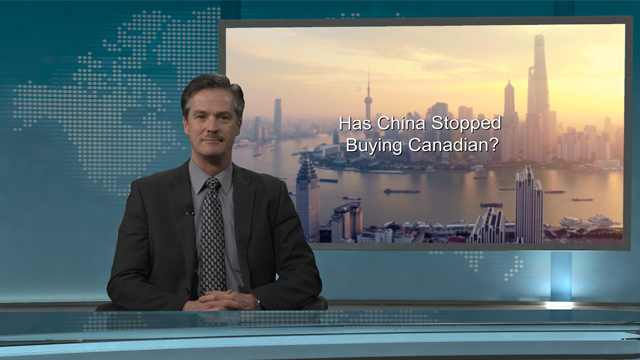Canada’s export sales to China shone in 2017. It was a relief, really, because prior growth hadn’t been that great. In fact, China’s hunger for Canadian goods all but evaporated in the 2013-16 period, throwing the future with all its aspirations of diversification into serious doubt. Was 2017 just good luck, or are Canada’s China-bound exports in for a sustained revival?
Radical growth became a New Millennium norm for Canadian exporters to China. Average annual growth of goods shipments was 16.7 per cent, spread nicely across the industrial spectrum. The great challenge was actually keeping up with this pace. Then with little warning, growth was hacked to 5.7 per cent in 2013, and remained alarmingly slow for three more years. It was yet another series of facts used to illustrate a China that was stumbling and trying to regain a foothold.
For a season, it looked like China was finally joining the swollen ranks of slow-growing post-recession economies – the ‘new normal’ finally caught up with the Middle Kingdom. There were worries that permanently slower GDP growth would clash with China’s over-leveraged financial sector, wreaking havoc not only with its own economic potential, but that of the world as well. Recent stronger growth – aided by the ramp-up of the US and European economies – is challenging that view. Canada’s recent export success seems to agree. If so, what really happened during those softer years?
Canadian export sales to China have faltered
Canada’s export numbers provide an interesting clue. The sharp weakening in our results was split quite dramatically along industry lines. Collectively, mining and energy exports fell outright by almost 13 per cent, with iron ore down 23 per cent, coal off 17 per cent, and oil & gas plunging 50 per cent. This is in large part due to the collapse in prices that began in mid-2014. But what also stands out in the data is that they were starting to tumble ahead of the swoon in prices, indicating something deeper in the economy, like excessive production. The vast accumulation of steel inventories in the post-recession years accounts for some of the fall-off in demand, and surpluses elsewhere in the system stalled the Chinese industrial complex’s previously insatiable demand for raw materials.
Key industries are bucking the trend
However, at the same time, rapid growth continued in other industries. Agri-food exports as a whole averaged 12 per cent growth annually, and their share of Canada’s total global agri-food exports continues to rise steadily. Leading the charge are non-wheat grains, seafood and soybeans, but, as a previous Commentary argues, there is also lots of promise for prepared foods well into the future.
Higher-valued exports also showed impressive gains. Exports of autos and light-duty vehicles have catapulted ahead, rising over forty-fold between 2012 and 2016, and building further on that in 2017. Precious metals were not far behind, on average doubling every year in the same 4-year period. Aerospace products, which are typically volatile, averaged 15 per cent growth in the same timeframe.
These sectors are largely the ‘climbers’, though, rising sharply but from a relatively low base. Mainstay industries are actually also performing well. The growth path for both pulp and oilseeds (net of soybeans) was a smart 7 per cent annually in both cases. These account for 15 and 12 per cent of total merchandise exports to China, respectively.
Trade with China and Canada is alive and well
Clearly, there is still vibrant trade going on between China and Canada. Those who have sounded the death-knell to the diversification we saw in the pre-recession period are lumping two very different stories together. Diversification to this faster-growing space is alive and well, and that will become all the more obvious when China’s inventory overhang begins to melt away. In actual fact, there are clear signs that the thaw is already on: Chinese imports of raw materials are on the up and up again.
The bottom line?
Now is definitely not the time to give up on the China strategy. The Middle Kingdom may have taken a pause in recent years, but there is clear evidence that the page is turning. China’s purchasing power remains a powerful force on the world stage, and as it’s worth $25 billion annually to Canadian exporters, we would do well to watch – and serve – it carefully.





